The biggest entertainment stories
Get our big stories about Hollywood, film, television, music, arts, culture and more right in your inbox as soon as they publish.
You may occasionally receive promotional content from the Los Angeles Times.

Call it art history meets HBO.
Towering castles, knights on horseback, wizards in flowing robes and long-necked, roaring dragons fill the Getty Center’s galleries this summer. A new exhibition plumbs the intersection of medieval life and pop culture, presenting ancient objects from the Middle Ages that inspired decades of literature, television, animation and live-action films alongside pop cultural representations of the time period.
The objects on view in “The Fantasy of the Middle Ages” — from the Getty’s permanent collection as well as loans from various California collections — include paintings and prints, photographs and handmade books from as early as the 14th century. One of them, a tiny prayer book from the 15th century, is leather-bound with egg-based tempera paint and touches of gold leaf on parchment. Also on view are costume and background studies from films such as Disney’s 1959 “Sleeping Beauty” along with the enormous prop book that opened Disney’s 1963 film “The Sword in the Stone.” The hand-painted, resin object, with leather clasps and a metal diary-like lock, was shown in the film resting on a velvet spread, its big pages turning slowly in sync with the narrator’s musical voice-over to kick off the story.
The exhibition grew out of a popular social media campaign the museum launched in 2014 called “Getty of Thrones.” The campaign appeared at first on Tumblr, then on Instagram; Getty curators recapped episodes of the TV series “Game of Thrones” using images from the museum’s collection. Continuing in that participatory DIY spirit, a section of the exhibition includes personal items on loan from Getty staffers. The toys, DVDs, replica swords, hats and Halloween costumes on view — including Morgan le Fay and Merlin Ken and Barbie dolls, dragon Beanie Babies, Dungeons & Dragons miniatures and the board game HeroQuest — exemplify just how far into the realms of pop culture and consumerism our enthrallment with medieval times reaches.
“People were really into it and they started asking us a lot of questions,” exhibition co-curator Larisa Grollemond says of the “Getty of Thrones” campaign. “They wanted to know: ‘What is real about this? What is based in history? Is there anything from the actual Middle Ages that comes out in ‘Game of Thrones?’”
The answer is more nuanced than one might expect, Grollemond says. So much of what we think we know about the Middle Ages is based on retellings of stories over centuries as opposed to actual history. It’s a long lineage of self-referential and ever-developing lore, some of it accurate and much of it studded with fantastical tropes, such as fairies, goblins and other magical creatures.
The exhibition is less about one-to-one connections between a particular object and a specific film or TV show, Grollemond says, and more about “the way that these visual hallmarks of the Middle Ages get passed down and reworked and translated over time in our culture and the way that it makes it into pop culture.”
“Game of Thrones” — a show that takes its inspiration from myriad sources of medieval retellings — reflects a vast prism of that layering.
“It attempts to look historically accurate” Grollemond says of the show, “in that it uses historical locations, some of the costuming is based on medieval examples, they often use medieval art in the backgrounds of the sets — but it is a work of fantasy.”
Here’s what Grollemond had to say about several items in the exhibition that have provided that narrative “connective tissue” throughout centuries, feeding our fascination with life in the Middle Ages.
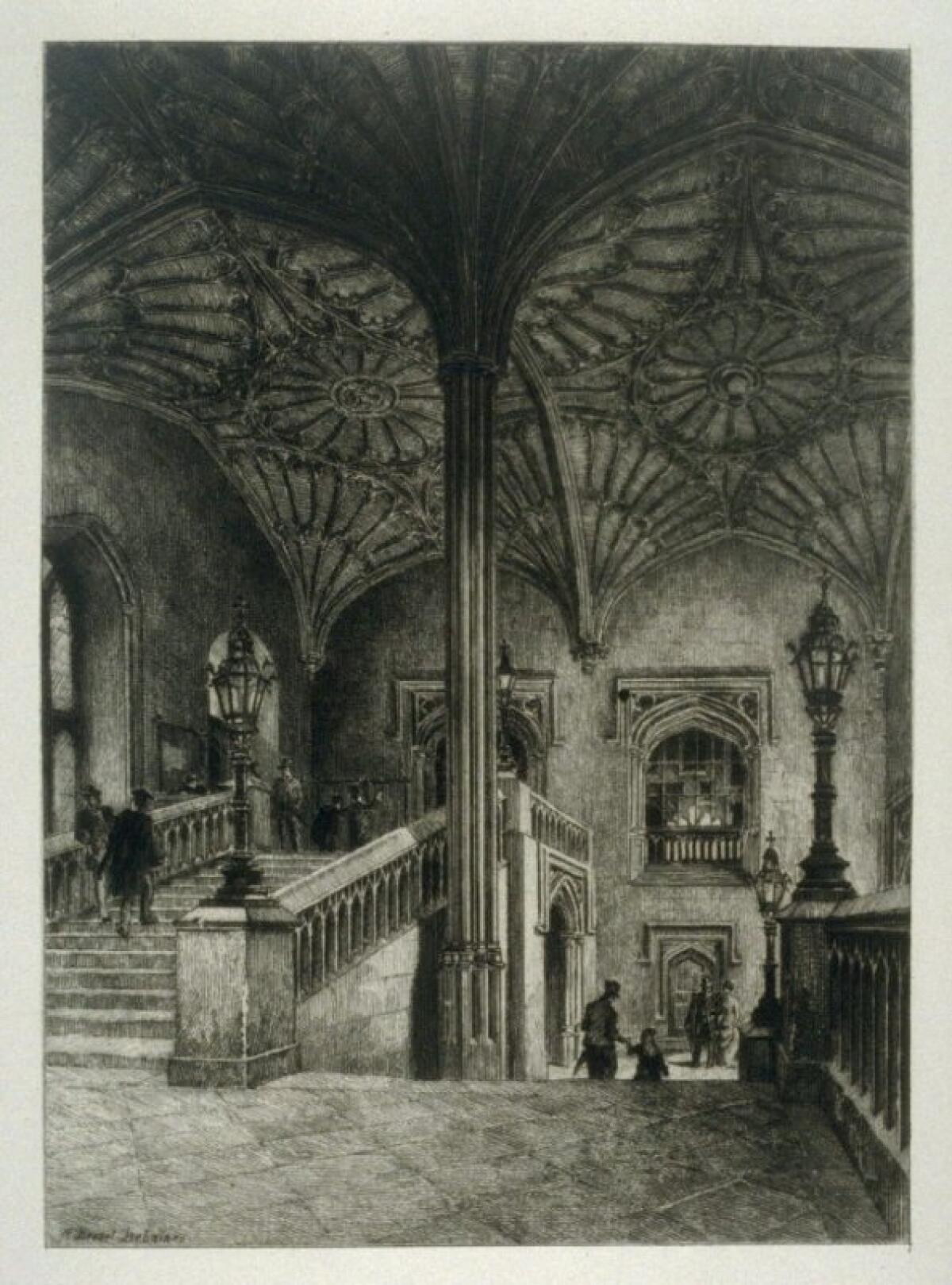
This is a 19th century print of Christ Church Cathedral in Oxford — if you’re a “Harry Potter” fan you might recognize it as one of the entrances to Hogwarts. This was probably not something the filmmakers looked directly at. We have it in the show to represent the long history of recording these medieval spaces in visual media. One of the things that’s especially interesting about contemporary medievalism is that movies and TV shows will often film real medieval art or in real medieval locations. And that’s especially true for something like “Harry Potter” — I think J.K. Rowling describes Hogwarts in the book as a giant castle with a series of towers and turrets, that’s it. So when it came time to bring Hogwarts to life, the Gothic architecture of later medieval England becomes the architectural fabric for the series of movies.
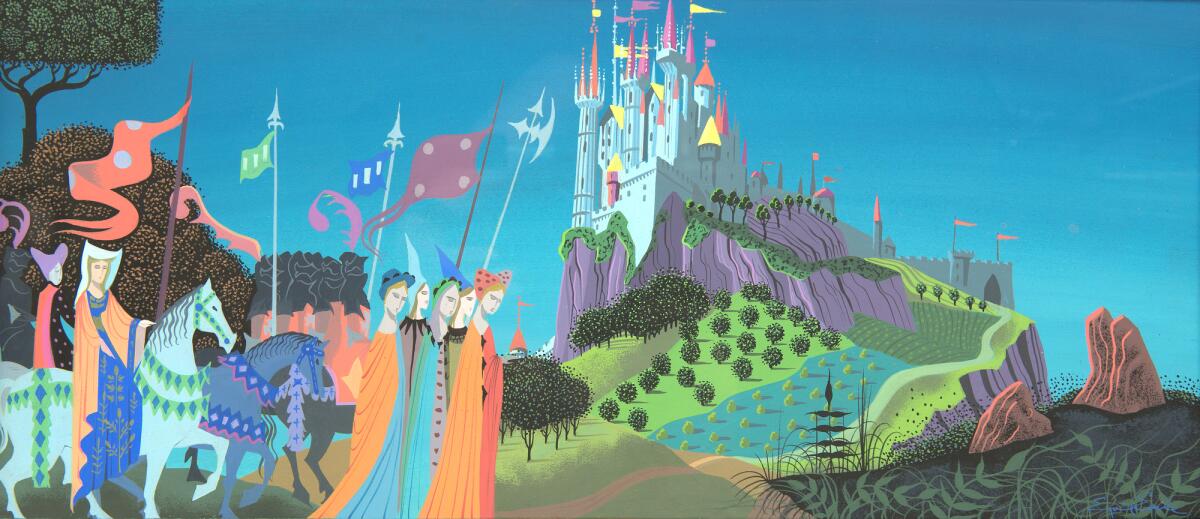
This is inspired by medieval art directly. It’s a concept study for the background of Disney’s “Sleeping Beauty.” The artist, Eyvind Earle, [was responsible for the art direction of the movie]. We know he was interested in medieval manuscript illumination. This really has the kind of cadence of medieval art — the flatness, the stylized vegetation and big blocks of color that characterized French illumination from the 15th century. There’s the suggestion of a landscape in the background, but it looks fantastical, unreal, in a way. This image is from a 15th century French manuscript, which we know that he was probably looking at pretty closely.
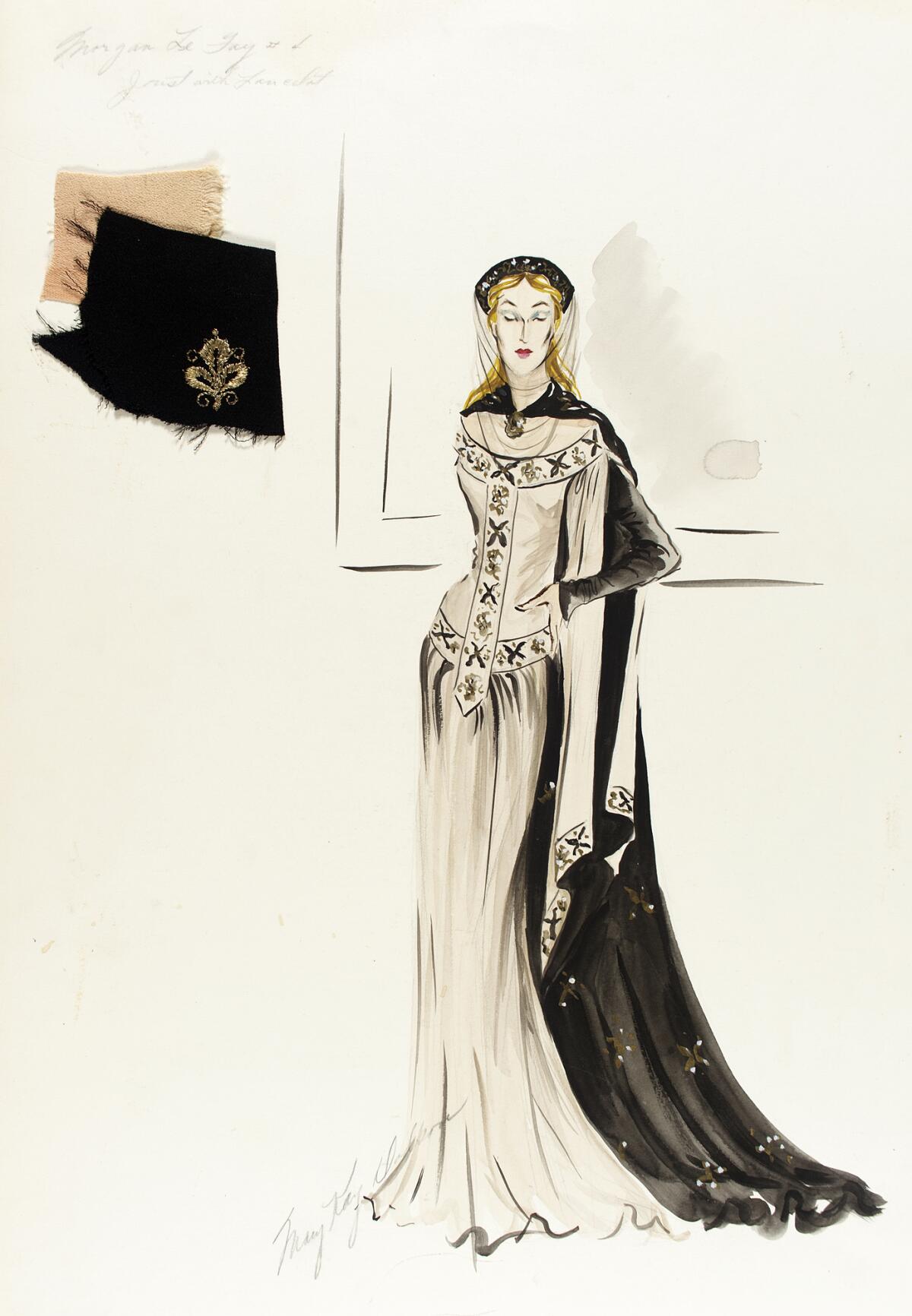
This is a costume study for the character of Morgan le Fay in the 1948 film “A Connecticut Yankee in King Arthur’s Court.” She’s a major character in the Arthur stories, a sorceress or witch figure. What’s so interesting about this study is that it reads as almost from a women’s fashion magazine from the ‘30s or ‘40s — there are elements that reference medieval costume, or what has become known as medieval costume, like a flowing cape or detailed embroidery. But the off-the-shoulder neckline is something you wouldn’t see in medieval costume, or the fanciful headgear. It reads medieval enough to a 20th century audience, but is also taking lots of cues from contemporary American fashion. It speaks to the flexibility of the Middle Ages in the minds of modern creators, but also, it’s another step in the evolution of the medieval — every new iteration, every new retelling, has the mark of the time and place in which it was created.
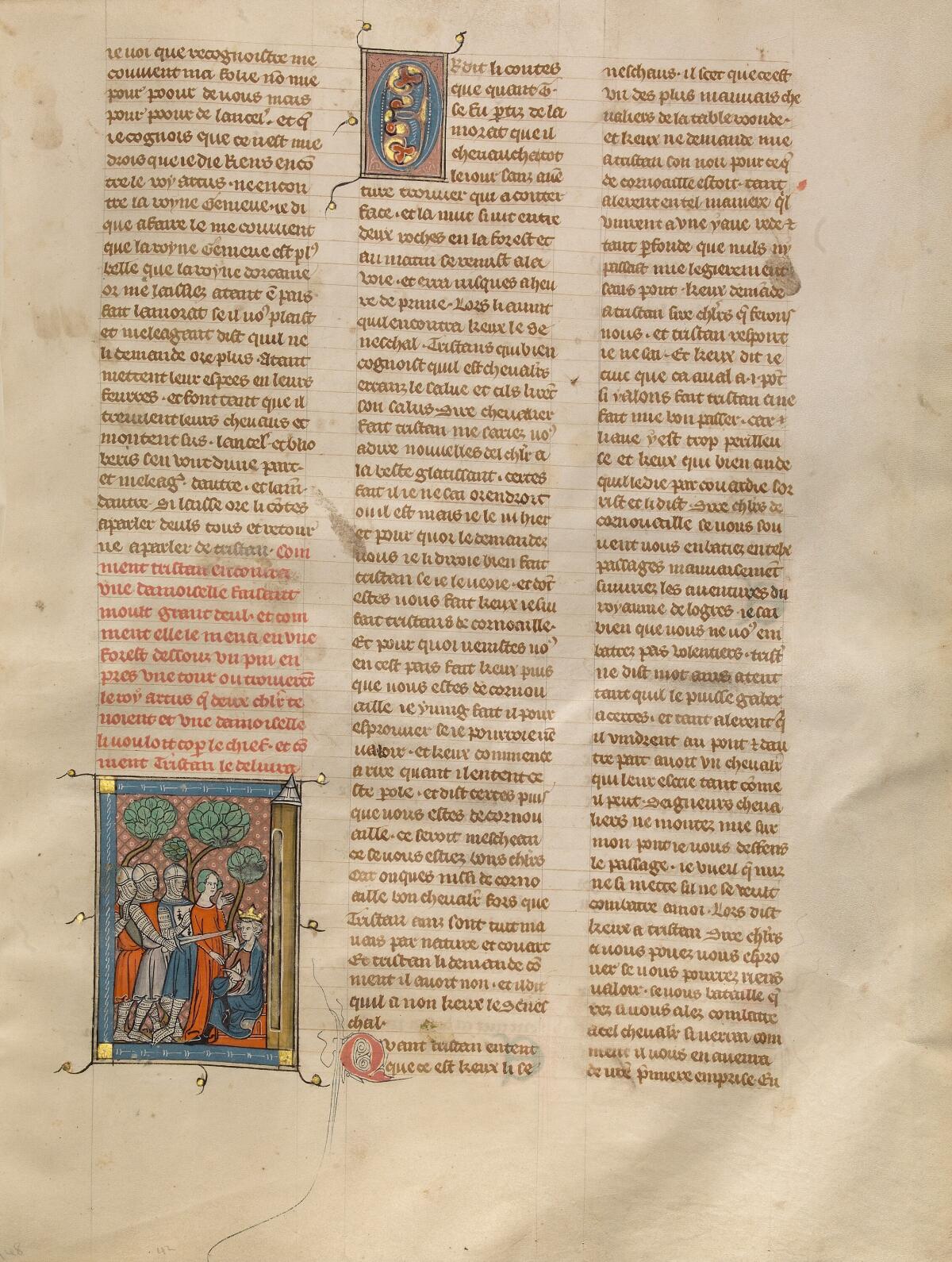
This manuscript in our collection recounts the story of the knight of the round table Tristan. I always liken the Arthur universe to the Marvel Cinematic Universe in that there’s a central group of characters and they all get their offshoots, in terms of literary treatment and in cinema, later. But this manuscript is dedicated to Tristan. It’s from France and it’s a 14th century copy of the romance of the good knight Tristan. Each manuscript is a unique piece of art. There are, in some cases, several copies of the same story, but none is quite exactly the same because you get a different artist who does the images, a different scribe who writes out the text, and so each surviving medieval manuscript is a unique exemplar.
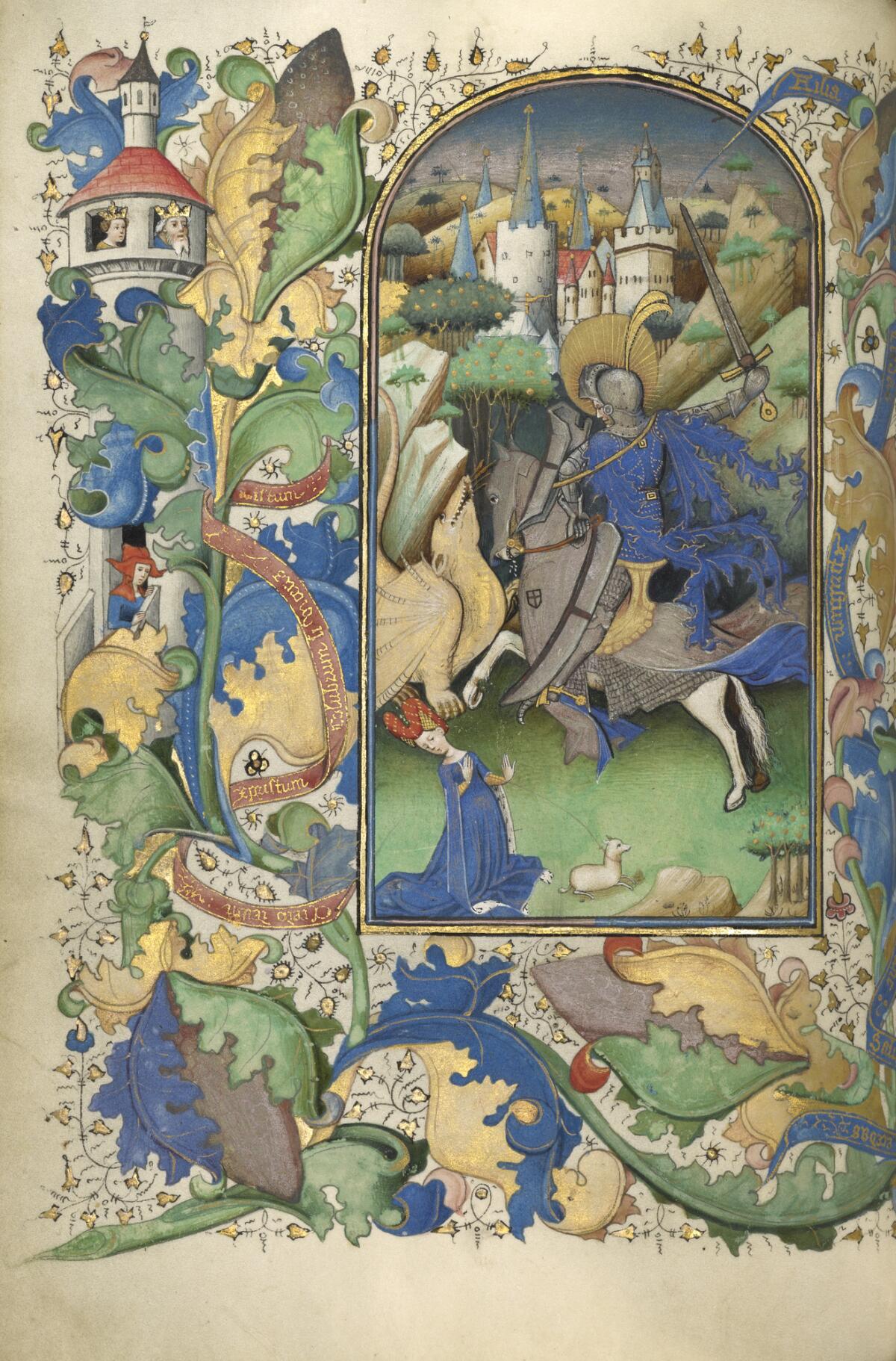
This is a manuscript from our collection, a little prayer book. I chose it because it’s so much how we think of the Middle Ages as this colorful, dramatic place. The scene is St. George killing the dragon, but he’s dressed as this heroic knight saving this damsel dressed as we’d expect a princess to be dressed. The castle in the background looks a lot like the “Cinderella” castle or the “Sleeping Beauty” castle. It sort of participates in this idea of the Middle Ages, which we’ve received but which is already starting to be present in the art of the Middle Ages. This kind of romantic idea of the Middle Ages is something that comes out in movies and television, especially from the 1990s — like “First Knight” with Sean Connery. It’s an Arthur story, a retelling of that legend, presenting the Middle Ages as this very nostalgic, romantic place full of heroic knights and damsels in distress.
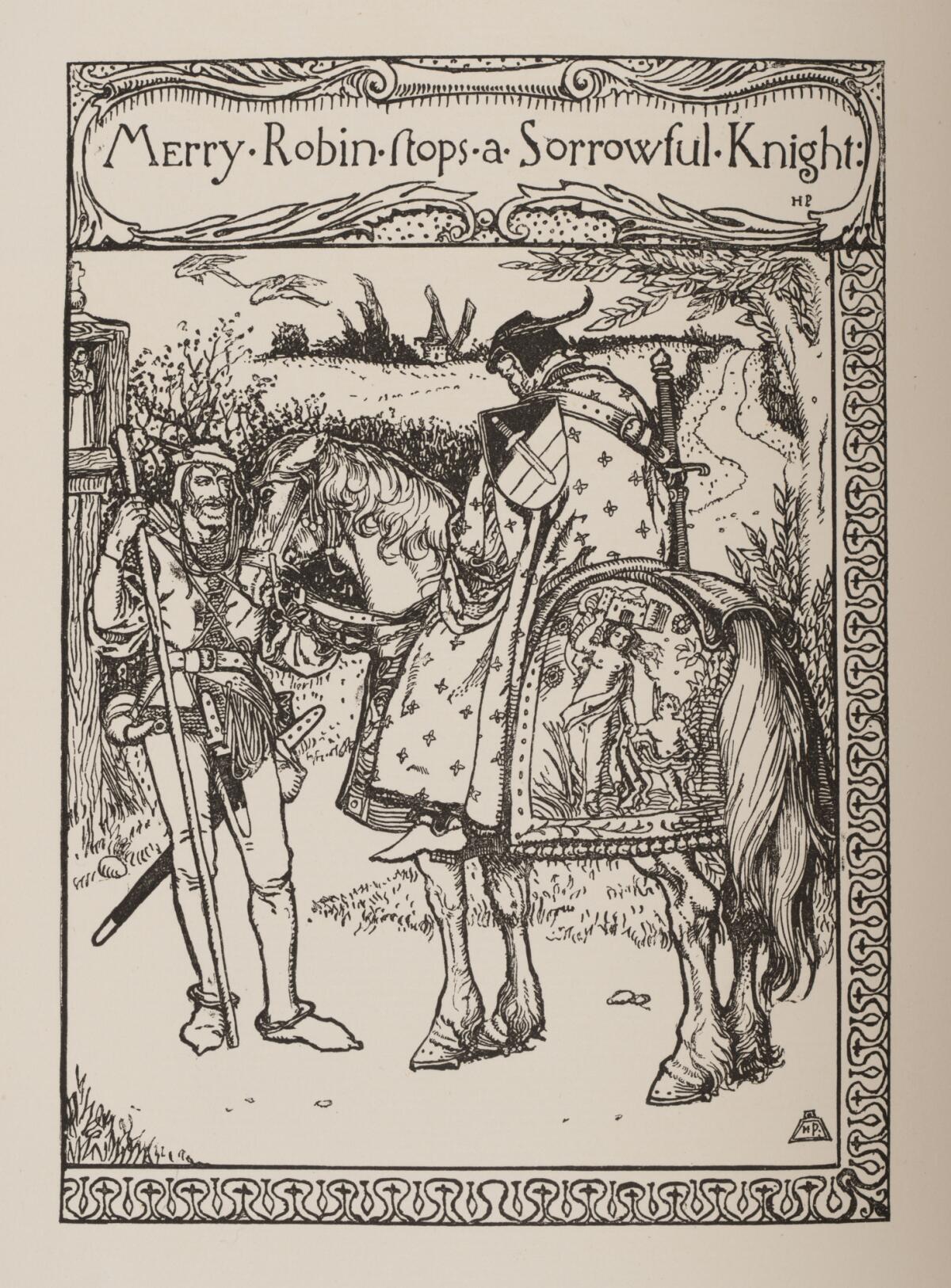
Robin Hood is a story which has been passed down from medieval literature and then repackaged, re-popularized, for new audiences. This is a Howard Pyle illustrated version, which is from the early 20th century. It becomes really popular with children in particular. It sort of reworks the medieval story, and centuries of retelling it, by putting it with these large illustrations and making the language simpler. And it ignites a new popularity for these medieval stories among children in the early 20th century. It’s this version of the story that cements the character of Robin Hood and the characters that surround him for a new generation that then takes that idea and repackages it as a Disney story. And we still have so many versions of Robin Hood in modern cinema.
‘The Fantasy of the Middle Ages’
Where: The Getty Center, 1200 Getty Center Drive, Los Angeles
When: 10 a.m.-5:30 p.m. Tuesdays-Sundays. Ends Sept. 11.
Cost: Free with reservation
Info: getty.edu/art/exhibitions/fantasy
The biggest entertainment stories
Get our big stories about Hollywood, film, television, music, arts, culture and more right in your inbox as soon as they publish.
You may occasionally receive promotional content from the Los Angeles Times.